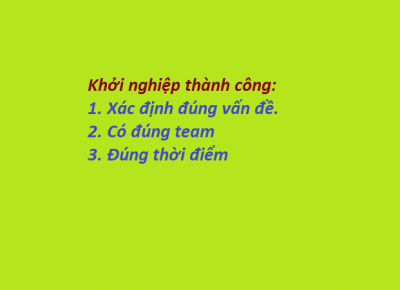Tin tức
Teaching Speaking
Viết bởi: Hayriye Kayi, 09 05 2020
Speaking is "the process of building and sharing meaning through the use of verbal and non-verbal symbols, in a variety of contexts" (Chaney, 1998, p. 13). Speaking is a crucial part of second language learning and teaching. Despite its importance, for many years, teaching speaking has been undervalued and English language teachers have continued to teach speaking just as a repetition of drills or memorization of dialogues. However, today's world requires that the goal of teaching speaking should improve students' communicative skills, because, only in that way, students can express themselves and learn how to follow the social and cultural rules appropriate in each communicative circumstance. In order to teach second language learners how to speak in the best way possible, some speaking activities are provided below, that can be applied to ESL and EFL classroom settings, together with suggestions for teachers who teach oral language.
What is meant by "teaching speaking" is to teach ESL learners to:
ow many linguistics and ESL teachers agree on that students learn to speak in the second language by "interacting". Communicative language teaching and collaborative learning serve best for this aim. Communicative language teaching is based on real-life situations that require communication. By using this method in ESL classes, students will have the opportunity of communicating with each other in the target language. In brief, ESL teachers should create a classroom environment where students have real-life communication, authentic activities, and meaningful tasks that promote oral language. This can occur when students collaborate in groups to achieve a goal or to complete a task.
After a content-based lesson, a discussion can be held for various reasons. The students may aim to arrive at a conclusion, share ideas about an event, or find solutions in their discussion groups. Before the discussion, it is essential that the purpose of the discussion activity is set by the teacher. In this way, the discussion points are relevant to this purpose, so that students do not spend their time chatting with each other about irrelevant things. For example, students can become involved in agree/disagree discussions. In this type of discussions, the teacher can form groups of students, preferably 4 or 5 in each group, and provide controversial sentences like “people learn best when they read vs. people learn best when they travel”. Then each group works on their topic for a given time period, and presents their opinions to the class. It is essential that the speaking should be equally divided among group members. At the end, the class decides on the winning group who defended the idea in the best way. This activity fosters critical thinking and quick decision making, and students learn how to express and justify themselves in polite ways while disagreeing with the others. For efficient group discussions, it is always better not to form large groups, because quiet students may avoid contributing in large groups. The group members can be either assigned by the teacher or the students may determine it by themselves, but groups should be rearranged in every discussion activity so that students can work with various people and learn to be open to different ideas. Lastly, in class or group discussions, whatever the aim is, the students should always be encouraged to ask questions, paraphrase ideas, express support, check for clarification, and so on.
One other way of getting students to speak is role-playing. Students pretend they are in various social contexts and have a variety of social roles. In role-play activities, the teacher gives information to the learners such as who they are and what they think or feel. Thus, the teacher can tell the student that "You are David, you go to the doctor and tell him what happened last night, and…" (Harmer, 1984)
Simulations are very similar to role-plays but what makes simulations different than role plays is that they are more elaborate. In simulations, students can bring items to the class to create a realistic environment. For instance, if a student is acting as a singer, she brings a microphone to sing and so on. Role plays and simulations have many advantages. First, since they are entertaining, they motivate the students. Second, as Harmer (1984) suggests, they increase the self-confidence of hesitant students, because in role play and simulation activities, they will have a different role and do not have to speak for themselves, which means they do not have to take the same responsibility.
In this activity, students are supposed to be working in pairs. One student will have the information that other partner does not have and the partners will share their information. Information gap activities serve many purposes such as solving a problem or collecting information. Also, each partner plays an important role because the task cannot be completed if the partners do not provide the information the others need. These activities are effective because everybody has the opportunity to talk extensively in the target language.
On a given topic, students can produce ideas in a limited time. Depending on the context, either individual or group brainstorming is effective and learners generate ideas quickly and freely. The good characteristics of brainstorming is that the students are not criticized for their ideas so students will be open to sharing new ideas.
Students can briefly summarize a tale or story they heard from somebody beforehand, or they may create their own stories to tell their classmates. Story telling fosters creative thinking. It also helps students express ideas in the format of beginning, development, and ending, including the characters and setting a story has to have. Students also can tell riddles or jokes. For instance, at the very beginning of each class session, the teacher may call a few students to tell short riddles or jokes as an opening. In this way, not only will the teacher address students’ speaking ability, but also get the attention of the class.
Students can conduct interviews on selected topics with various people. It is a good idea that the teacher provides a rubric to students so that they know what type of questions they can ask or what path to follow, but students should prepare their own interview questions. Conducting interviews with people gives students a chance to practice their speaking ability not only in class but also outside and helps them becoming socialized. After interviews, each student can present his or her study to the class. Moreover, students can interview each other and "introduce" his or her partner to the class.
This is a very enjoyable, whole-class, free-speaking activity for which students sit in a circle. For this activity, a teacher starts to tell a story, but after a few sentences he or she stops narrating. Then, each student starts to narrate from the point where the previous one stopped. Each student is supposed to add from four to ten sentences. Students can add new characters, events, descriptions and so on.
http://iteslj.org/Techniques/Kayi-TeachingSpeaking.html
What is meant by "teaching speaking" is to teach ESL learners to:
- Produce the English speech sounds and sound patterns
- Use word and sentence stress, intonation patterns and the rhythm of the second language.
- Select appropriate words and sentences according to the proper social setting, audience, situation and subject matter.
- Organize their thoughts in a meaningful and logical sequence.
- Use language as a means of expressing values and judgments.
- Use the language quickly and confidently with few unnatural pauses, which is called as fluency. (Nunan, 2003)
ow many linguistics and ESL teachers agree on that students learn to speak in the second language by "interacting". Communicative language teaching and collaborative learning serve best for this aim. Communicative language teaching is based on real-life situations that require communication. By using this method in ESL classes, students will have the opportunity of communicating with each other in the target language. In brief, ESL teachers should create a classroom environment where students have real-life communication, authentic activities, and meaningful tasks that promote oral language. This can occur when students collaborate in groups to achieve a goal or to complete a task.
After a content-based lesson, a discussion can be held for various reasons. The students may aim to arrive at a conclusion, share ideas about an event, or find solutions in their discussion groups. Before the discussion, it is essential that the purpose of the discussion activity is set by the teacher. In this way, the discussion points are relevant to this purpose, so that students do not spend their time chatting with each other about irrelevant things. For example, students can become involved in agree/disagree discussions. In this type of discussions, the teacher can form groups of students, preferably 4 or 5 in each group, and provide controversial sentences like “people learn best when they read vs. people learn best when they travel”. Then each group works on their topic for a given time period, and presents their opinions to the class. It is essential that the speaking should be equally divided among group members. At the end, the class decides on the winning group who defended the idea in the best way. This activity fosters critical thinking and quick decision making, and students learn how to express and justify themselves in polite ways while disagreeing with the others. For efficient group discussions, it is always better not to form large groups, because quiet students may avoid contributing in large groups. The group members can be either assigned by the teacher or the students may determine it by themselves, but groups should be rearranged in every discussion activity so that students can work with various people and learn to be open to different ideas. Lastly, in class or group discussions, whatever the aim is, the students should always be encouraged to ask questions, paraphrase ideas, express support, check for clarification, and so on.
One other way of getting students to speak is role-playing. Students pretend they are in various social contexts and have a variety of social roles. In role-play activities, the teacher gives information to the learners such as who they are and what they think or feel. Thus, the teacher can tell the student that "You are David, you go to the doctor and tell him what happened last night, and…" (Harmer, 1984)
Simulations are very similar to role-plays but what makes simulations different than role plays is that they are more elaborate. In simulations, students can bring items to the class to create a realistic environment. For instance, if a student is acting as a singer, she brings a microphone to sing and so on. Role plays and simulations have many advantages. First, since they are entertaining, they motivate the students. Second, as Harmer (1984) suggests, they increase the self-confidence of hesitant students, because in role play and simulation activities, they will have a different role and do not have to speak for themselves, which means they do not have to take the same responsibility.
In this activity, students are supposed to be working in pairs. One student will have the information that other partner does not have and the partners will share their information. Information gap activities serve many purposes such as solving a problem or collecting information. Also, each partner plays an important role because the task cannot be completed if the partners do not provide the information the others need. These activities are effective because everybody has the opportunity to talk extensively in the target language.
On a given topic, students can produce ideas in a limited time. Depending on the context, either individual or group brainstorming is effective and learners generate ideas quickly and freely. The good characteristics of brainstorming is that the students are not criticized for their ideas so students will be open to sharing new ideas.
Students can briefly summarize a tale or story they heard from somebody beforehand, or they may create their own stories to tell their classmates. Story telling fosters creative thinking. It also helps students express ideas in the format of beginning, development, and ending, including the characters and setting a story has to have. Students also can tell riddles or jokes. For instance, at the very beginning of each class session, the teacher may call a few students to tell short riddles or jokes as an opening. In this way, not only will the teacher address students’ speaking ability, but also get the attention of the class.
Students can conduct interviews on selected topics with various people. It is a good idea that the teacher provides a rubric to students so that they know what type of questions they can ask or what path to follow, but students should prepare their own interview questions. Conducting interviews with people gives students a chance to practice their speaking ability not only in class but also outside and helps them becoming socialized. After interviews, each student can present his or her study to the class. Moreover, students can interview each other and "introduce" his or her partner to the class.
This is a very enjoyable, whole-class, free-speaking activity for which students sit in a circle. For this activity, a teacher starts to tell a story, but after a few sentences he or she stops narrating. Then, each student starts to narrate from the point where the previous one stopped. Each student is supposed to add from four to ten sentences. Students can add new characters, events, descriptions and so on.
http://iteslj.org/Techniques/Kayi-TeachingSpeaking.html
Có thể bạn quan tâm
11 06 2023 Xem thêm
Feynman wrote a letter to his former student explaining what problems worth solving: The worthwhile...
27 05 2023 Xem thêm
Doanh nghiệp cần các kỹ sư và nhà nghiên cứu giải quyết vấn đề của doanh nghiệp đó như tối ưu vận...
16 03 2023 Xem thêm
Cần phải xác định đúng vấn đề và tìm một team phù hợp.
04 01 2023 Xem thêm
Lấy tổng tài sản (đã trừ nợ, trừ thuế) chia cho tổng số cổ phiếu.









